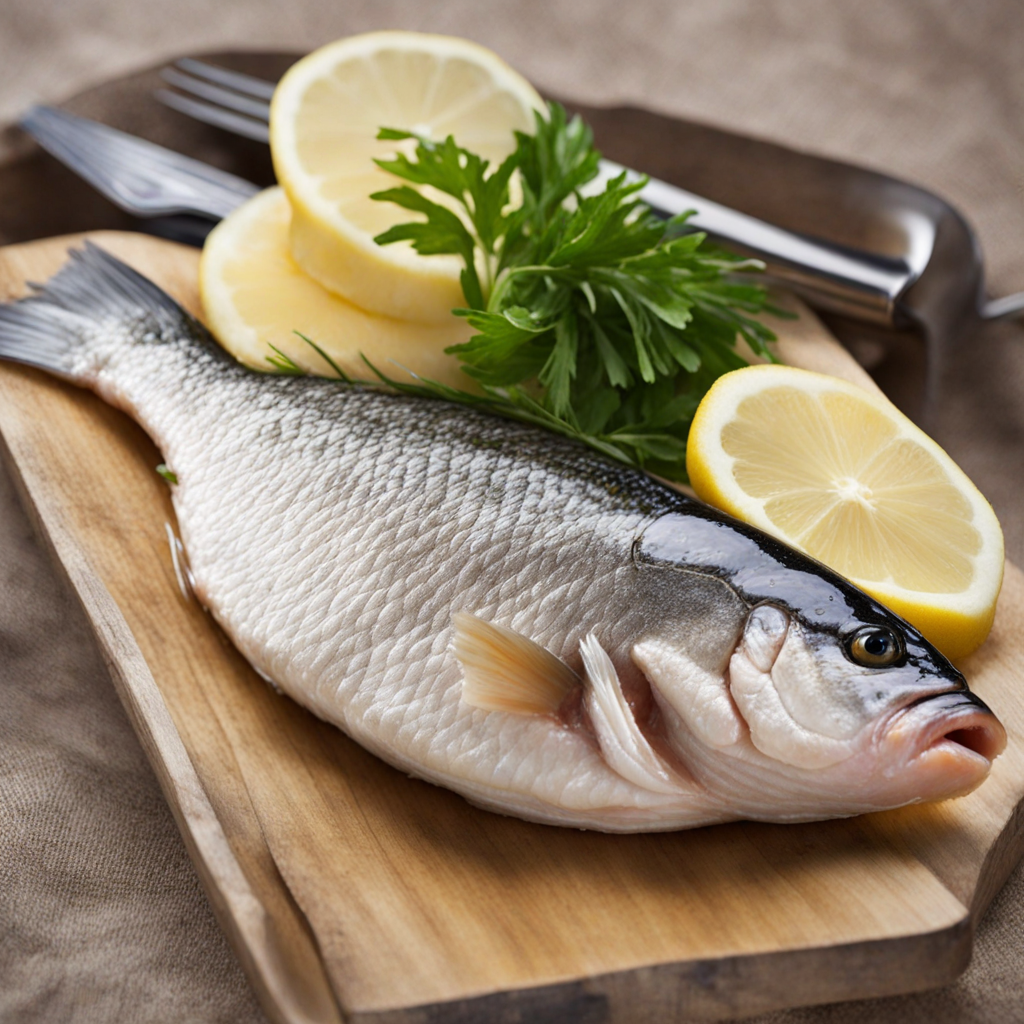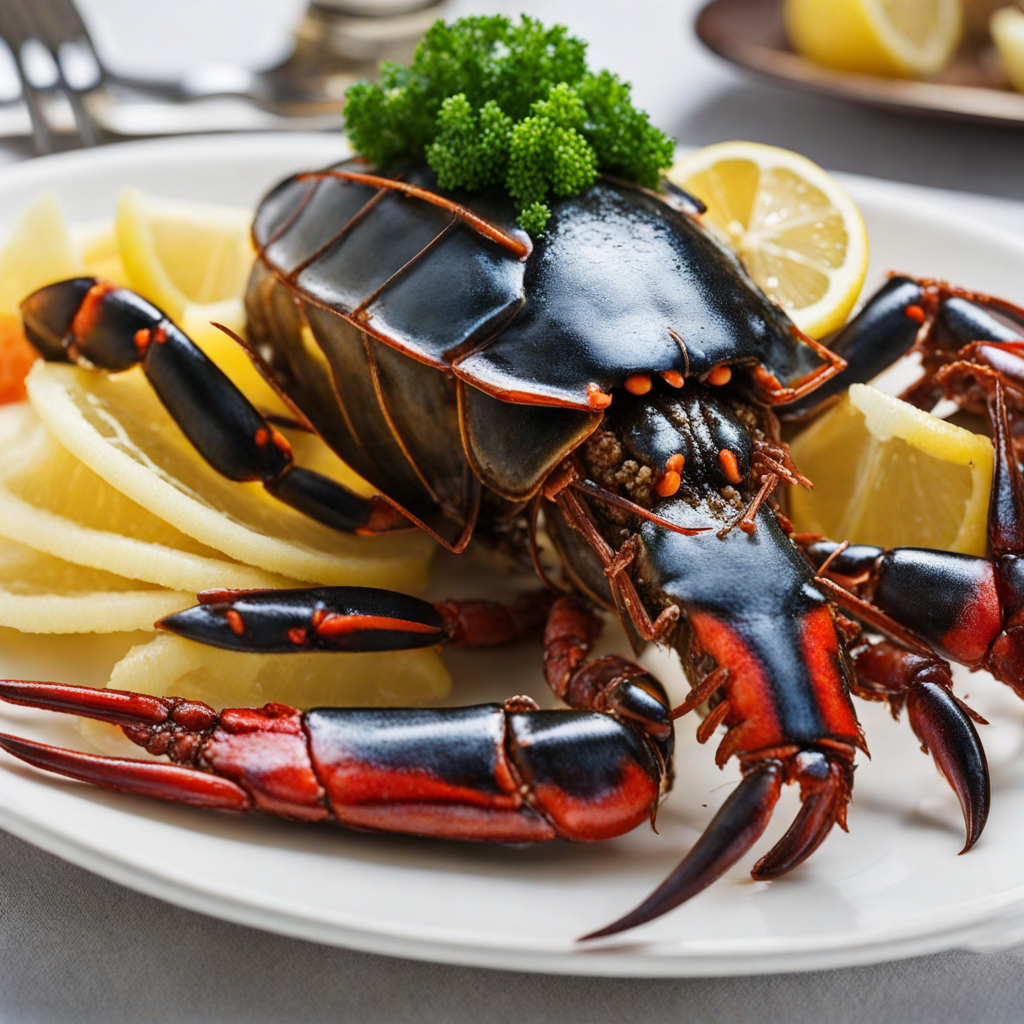Barramundi
Barramundi, also known as Lates calcarifer, is a prized fish native to the coastal waters of Australia and Southeast Asia. Renowned for its mild flavor and buttery texture, barramundi offers a delightful balance of sweetness and richness that makes it a versatile choice for any culinary adventure. The flesh is typically white with a slight pink hue, and when cooked, it flakes beautifully, making it perfect for grilling, pan-searing, or baking. Its unique taste profile pairs well with a variety of seasonings, from citrus and herbs to spicy marinades, allowing it to shine in both simple preparations and complex dishes. One of the standout features of barramundi is its sustainability; it is often farmed in eco-friendly environments, making it a responsible seafood choice. The fish is commonly found in Australian waters, often inhabiting estuaries and mangroves. Its versatility extends beyond just flavor; barramundi can be served in numerous ways, whether as a star ingredient in a fresh salad, a centerpiece on a dinner plate, or even as a filling for tacos. The fish's ability to absorb flavors makes it a favorite among chefs and home cooks alike, encouraging creativity in the kitchen. When you bite into a perfectly cooked barramundi, you'll experience a delicate crust that gives way to succulent, flaky meat. The fish pairs wonderfully with a range of sides, such as roasted vegetables, quinoa, or a zesty citrus salad, enhancing the overall dining experience. Whether you are exploring Australian cuisine or simply looking to elevate your seafood repertoire, barramundi is a delightful option that promises to awaken your palate and introduce you to the rich culinary heritage of Australia.
How It Became This Dish
The History of Barramundi: Australia’s Iconic Fish Origin and Habitat Barramundi, scientifically known as Lates calcarifer, is a species of fish native to the coastal waters of the Indo-Pacific region, ranging from Southeast Asia to northern Australia. The name “barramundi” derives from the Aboriginal word for “large scale,” a fitting tribute to the fish’s impressive size and striking appearance. Typically found in estuaries, rivers, and coastal waters, barramundi can thrive in both saltwater and freshwater, making it a versatile and resilient species. They are known for their silvery scales, which reflect the glimmer of the sun, and their ability to grow remarkably large—some individuals can weigh over 60 kilograms (about 132 pounds). Cultural Significance For Indigenous Australians, barramundi holds deep cultural significance. It has been a part of their diet and cultural practices for thousands of years. Aboriginal communities along the northern coast of Australia have long relied on barramundi as a crucial source of nutrition. The fish is often featured in traditional hunting and fishing practices, and its presence in local waterways is celebrated through various cultural narratives and songs. In addition to its nutritional value, barramundi is also integrated into the spiritual lives of Indigenous Australians. Many stories and Dreamtime legends surrounding barramundi highlight its role in the natural world and its connection to ancestral beings. For example, the fish is sometimes depicted as a totem, symbolizing strength and resilience. Traditional fishing methods, which include using nets, spears, and traps, are still practiced by some Indigenous groups today, showcasing a sustainable relationship with the environment. European Encounter and Introduction to Global Markets The arrival of European settlers in Australia during the late 18th century marked a significant turning point for barramundi. Early explorers and settlers quickly recognized the fish’s abundance and quality, leading to its incorporation into colonial diets. The fish was often prepared simply, grilled or baked, and served alongside local produce. As the European palate became acquainted with barramundi, it began to emerge as a staple in the burgeoning Australian seafood market. During the 19th and early 20th centuries, barramundi's popularity continued to grow. Fishing practices became more refined, with the introduction of commercial fishing methods that allowed for larger catches. The fish was processed and shipped to urban centers like Sydney and Melbourne, where it was embraced by a growing population eager to explore new culinary experiences. The introduction of barramundi to the broader Australian palate laid the groundwork for its eventual prominence in the culinary scene. Aquaculture and Sustainable Fishing As demand for barramundi increased, so did the pressure on wild populations. By the 1970s and 1980s, concerns over overfishing led to the development of aquaculture programs aimed at sustainable farming practices. This marked a significant shift in the industry, as barramundi farming allowed for a consistent and environmentally friendly supply of fish. The first successful barramundi aquaculture operations began in Queensland, where farmers utilized the fish’s adaptability to both freshwater and saltwater environments. The farming techniques developed during this period emphasized sustainable practices, including recirculating water systems and responsible feed sourcing. As a result, barramundi became a symbol of sustainable seafood in Australia, appealing to environmentally conscious consumers. In recent years, barramundi aquaculture has expanded significantly, with farms established not only in Australia but also in other countries such as Vietnam and the Philippines. These operations have contributed to a global market for barramundi, which is now enjoyed in various international cuisines. The fish is celebrated for its mild flavor, flaky texture, and versatility in cooking, making it a sought-after ingredient in restaurants and homes alike. Barramundi in Contemporary Cuisine Today, barramundi is a staple on Australian menus, celebrated for its culinary versatility. Chefs and home cooks alike appreciate its ability to shine in a variety of dishes—from simple grilled preparations to more elaborate recipes featuring Asian or Mediterranean influences. Popular methods of preparation include pan-searing, baking, and barbecuing, often accompanied by fresh herbs, citrus, and local vegetables. The fish has also gained international recognition, appearing in fine dining establishments around the world. Its mild flavor allows it to take on the characteristics of different cuisines, making it a favorite for chefs aiming to create innovative dishes. Barramundi has become a symbol of Australian cuisine, reflecting the country’s diverse food culture and commitment to sustainability. In addition to its culinary uses, barramundi has also found its way into the world of health and nutrition. Rich in omega-3 fatty acids, vitamins, and minerals, barramundi is often promoted as a healthy seafood choice. This has further contributed to its popularity among health-conscious consumers, who appreciate its nutritional benefits alongside its delicious taste. Conclusion: A Fish with a Legacy From its origins as a vital food source for Indigenous Australians to its present-day status as a culinary icon, barramundi has a rich and diverse history. It embodies the intersection of culture, sustainability, and gastronomy, reflecting the evolving relationship between humans and the natural world. As barramundi continues to thrive in both wild and farmed environments, its legacy as a beloved fish in Australia and beyond is sure to endure. In a time when sustainable practices are increasingly important, barramundi serves as a model for responsible seafood consumption, reminding us of the importance of honoring both tradition and innovation in our culinary practices. Whether enjoyed in a casual fish and chips setting or as part of an elegant fine-dining experience, barramundi remains an enduring symbol of Australia’s rich culinary heritage.
You may like
Discover local flavors from Australia







